 Black Friday sale is now on. Book today and save! View deals
Black Friday sale is now on. Book today and save! View deals 
Things to do in Buenos Aires, Argentina
The Latino answer to New York, except with better food, friendlier locals and dancing in the streets, Buenos Aires is that kind of vibrant and stylish city everyone who visits dreams of moving to. As in, the day after they arrive. With her vast array of historic landmarks, gorgeous architecture, world-class museums, art galleries, shopping and dining options, Buenos Aires will have you at first glance.
So whatever you do, don’t make your visit a fleeting one. This is not a city you want to rush through, because here are the best things to do in Buenos Aires.
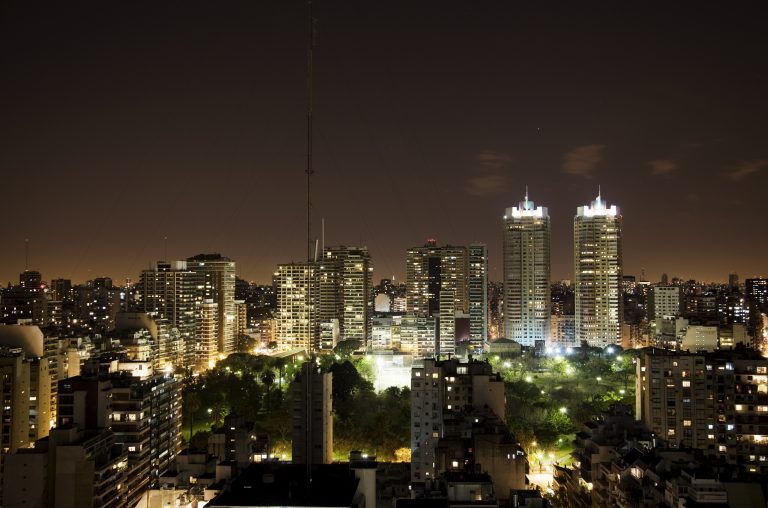
Overview of Buenos Aires, Argentina
A thriving metropolis of almost 3 million people, and one of the most prominent gateways into Latin America, Buenos Aires is one of the most enjoyable, avant-garde and captivating cities in the entire continent. But it can also be a very intimidating city, especially for first-time visitors.
Luckily, although this is a sprawling and at-times chaotic city, there are just a handful of suburbs or barrios (out of the 48 that make up the capital) which hold interest to visitors, so finding your bearings and getting around is easier than it may seem.
Here’s an overview of the most popular suburbs to stay in Buenos Aires:
Microcentro (Downtown)
Calle Florida is the city’s main pedestrian luxury shopping strip in the centre and although it doesn’t necessarily showcase the uniqueness of the city (you’ll have to hit the markets of San Telmo, Recoleta and Palermo for that) it still manages to attract every single tourist who comes to town.
But that’s probably because downtown boasts the most celebrated landmarks in all of Buenos Aires, like the impressive Obelisk, world-famous Teatro Colón, and historic Casa Rosada – Eva Peron’s favourite stage – as well as Plaza de Mayo, the main city square. Crazy busy by day and quiet at night, Downtown fits sightseers who don’t mind taking taxis to reach more happening suburbs in the evening.
San Telmo
The most historic quarter of the city is also its most romantic, with cobblestone streets, faroles (traditional candle street lights) and beautifully restored old mansions lending an immensely charismatic, old-world feel. Gentrified in recent years, San Telmo now boasts boutique hotels, hostels and B&Bs, as well as trendy boutiques and art galleries that attract weekend crowds in droves.
Most meet up in Plaza Dorrego to peruse the wares of its legendary flea market. San Telmo is the famed birthplace of the tango and the whole neighbourhood is awash with tango bars which spring to life of an evening. If you like your evenings to be as busy as your days then this is the barrio for you.
Recoleta
Stunning colonial mansions, grand plazas and wide, tree-lined avenues define this stylish barrio, home of the most famous cemetery in the whole continent, along with swanky hotels and world-class restaurants.
Centrally located and offering all the bells and whistles you’d expect in a modern city, not to mention easy access to every corner of the city and a lot of nearby attractions, Recoleta is a good choice for first-time visitors looking for luxury.
Barrio Norte
A hybrid between Microcentro and Recoleta, this barrio right next to the latter offers the best of both worlds. Whilst local real estate agents would insist that this is, in fact, all part of Recoleta, lower prices and a less upmarket feel say otherwise. A flourishing neighbourhood with good metro connection, Barrio Norte is a great option if you like the sound of Recoleta but wish to spend less, yet still have the fantastic strolling, dining and shopping options of a thriving centre.
Palermo
A collection of four distinct areas in one (Palermo Viejo, Palermo Hollywood, Palermo Soho and Palermo Chico) this is one of the trendiest areas of the city. With its large green open spaces, parks, lakes and forests, it is one of the most popular weekend destinations for locals looking to get away from the chaos of the city centre.
With a wicked nightlife and plenty of hip bars and clubs, and a high concentration of accommodation choices in Viejo, Palermo is a great option if you like to go for a stroll and a drink near your hotel after dark.
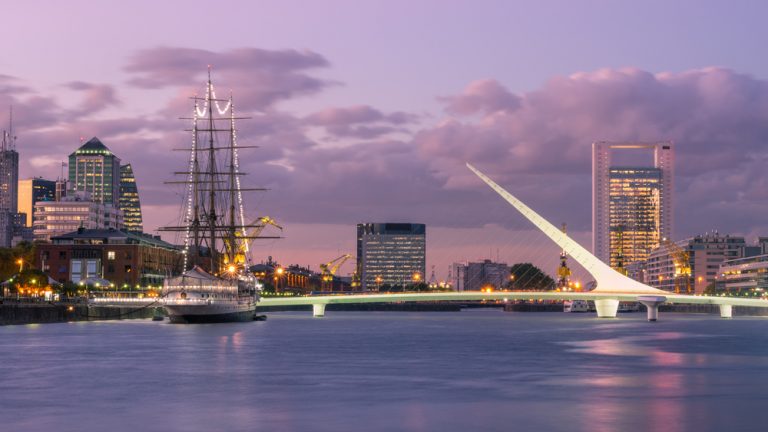
Puerto Madero
This is Buenos Aires’ newest upscale neighbourhood and, although you’ll certainly find a lot of luxury and comfort here, you will miss out on the more traditional atmosphere of Buenos Aires.
Nevertheless, the gentrification of this dock area is not exactly unattractive, and with plenty of dining options and breathtaking sunsets, Puerto Madero is certainly a gorgeous place to stay.
Every suburb of Buenos Aires boasts its own history and intrigue and although there are plenty more barrios to discover you’d do well to stay in one of the above-mentioned established areas, where tourist infrastructure and safety is quite spot on.
Buenos Aires’ Top Attractions
Those who have visited and fallen in love with Buenos Aires will attest to the city being all about experiences rather than landmarks. Nevertheless, this is a city drenched in history and culture, so the list of sightseeing attractions is both extensive and impressive.
Here are the city’s top attractions in Buenos Aires you really shouldn’t miss:
Plaza de Mayo
The heart and soul of Argentina’s political life for over two centuries, Plaza de Mayo is the epicentre of Downtown and, for many locals, represents the city’s most hopeful and painful memorial.
It was here that the revolution for independence started in 1810, and here that mothers of the Desaparecidos congregated every week for over three decades to demand news of their missing children, alleged victims of the brutal military junta which ruled the country in the 1970s and early 1980s.
Framing the plaza are the most important landmarks in the city – if not the whole country – including the former seat of the colonial-era government (Cabildo), the Metropolitan Cathedral (from where the current Pope hails) and Casa Rosada, the current Government House.
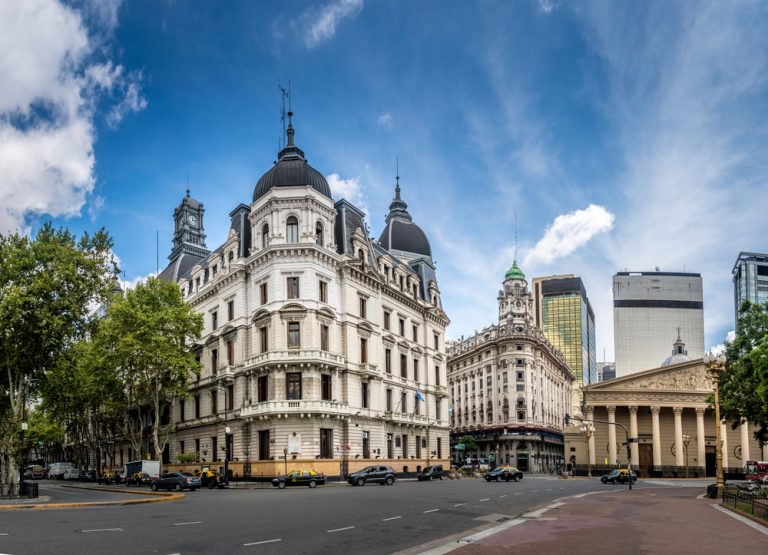
El Obelisco
Erected to commemorate the 400th birthday of the city, the Obelisk on the corner of 9 de Julio and Corrientes is quite impossible to miss, even if you tried. It rises 68 metres into the air and has become a symbol of pride and patriotism.
Along with Plaza de Mayo, this is the one place locals congregate to either protest or celebrate, things they tend to do quite regularly.
Recoleta Cemetary
Not just your everyday cemetery, the Recoleta necropolis has become a bona-fide tourist attraction, with the graves of the most prominent Argentinian politicians and figures of the last two centuries buried here, including former First Lady, Eva Peron.
The intricately carved artsy marble mausoleums have made Recoleta famous the world over and led to it being ranked among the most beautiful cemeteries in the world.
Teatro Colon
Until Sydney celebrated the opening of its famous Opera House, Teatro Colon was the world’s largest opera theatre and is a historic venue held in the highest of esteems since it was first built in 1908, thanks to its sublime acoustics. Yet a visit is worthwhile even if you can’t manage to nab tickets to a performance.
The eclectic and opulent architecture, and the extensive restoration work, make this a totally stunning feast for the eyes as well as the ears. Guided tours are highly recommended.
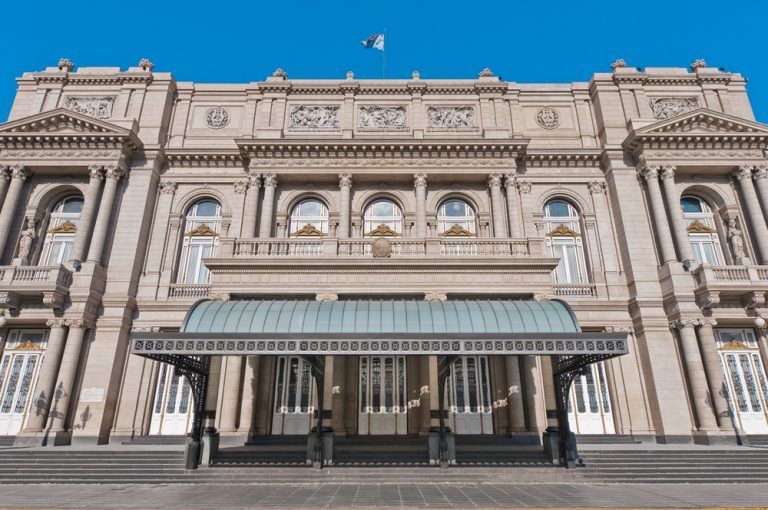
Caminito
La Boca’s iconic colourful street is arguably one of the most photographed in the whole city and although nowadays it’s littered with overly-touristy stalls selling kitsch souvenirs, it still remains a delightful place to visit, at least once.
Museo Nacional de Bellas Artes
It may seem a travesty that the most prestigious fine art museum in the city be housed in a renovated former drainage pump station, but if that doesn’t explain the evolution of Buenos Aires then nothing else does.
An impressive collection of fine art by Argentinian and European artists are spread out over three floors and 30 halls, with prominent works by Manet, Picasso and Rembrandt helping cement the museum’s reputation as South America’s ‘Louvre’. Entry is free (crazy but true) but do spend a few dollars on an audio guide as inscriptions are only in Spanish.
Plaza Dorrego, San Telmo
The city is brimming with fantastic weekend markets but the one you really shouldn’t miss is the one held in Plaza Dorrego on Sundays. Locals have been trading here for over three centuries, and although modern trend dictates wares be mostly of the antique kind (as opposed to the more traditional market goodies of meat, fruits and vegetables) the historic ambience remains the same.
Outdoor cafes and impromptu tango performances make this an absolutely lovely place to just ‘hang out’, as youngsters say, all day long.
Top things to do in Buenos Aires
Dive into the culture at San Telmo
Every Sunday the beautiful streets of San Telmo turn in to a wonderful, bustling market come street party, full of local artisans, street performers, and of course antique stalls. This amazing display of local culture takes place in the Plaza Dorrengo, and is one of the area’s most famous attractions.
This tradition originally began with only antique stalls in the main plaza, but quickly spread down the surrounding streets as local vendors and artist joined in the fun, becoming the energetic market you see today. This is the best place to pick up a hidden gem, a bargain antique, or shop for hand made souvenirs from your trip.
After a long day of shopping you can relax and grab a bite to eat in the many restaurants on Calle Defensa, a lovely little street that runs along side the Market.

Become a Boca fan at La Bombonera
Get up close and personal with the pride and joy of Buenos Aires, their professional football team the Boca Juniors, at the La Bombeonera stadium. If there happens to be a match while you’re in the area you’re in luck!
Don a crazy blue and yellow hat and jump along with the adoring fans, as they celebrate their team or indeed taunt the opposing one. Matches against their rival team, River Plate, rial so many emotions amongst the fans that they even get their own name, Superclasico.
It is said that watching these two teams battle it out on the pitch is on several ‘100 things to do before you die’ lists.
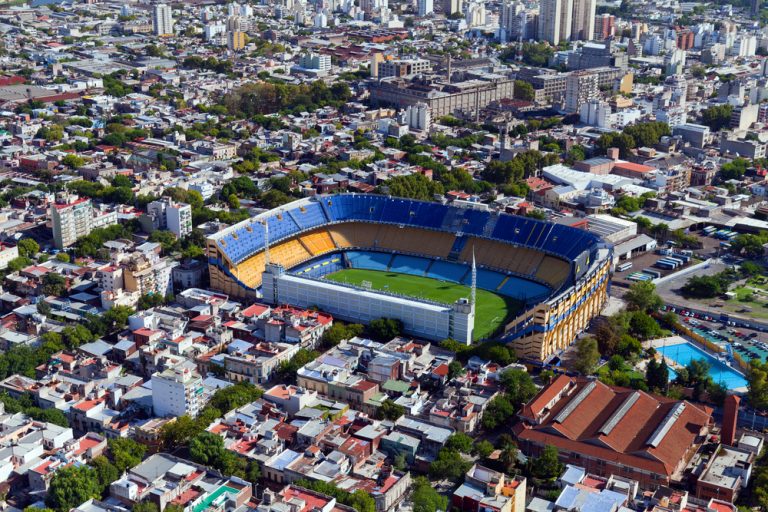
Take a walking tour of Caminito
Whilst in La Boca you must pay a visit to the Caminito, a collection of streets so full of life and colour that it attracts people from all over the world.
This brightly painted area was started by local artist Benito Quinquela Martín In 1960, as he wanted to express his artwork on the large canvas, that was then a collection of abandoned buildings.
Since that time artists travel from far and wide to adjoin their work with Benito’s, showcasing their art on anything from cobble stones to walls, and door frames to roof tops. With it’s rich history and beautiful artwork a walk through Caminito is an experience of a life time, and one not to be missed.
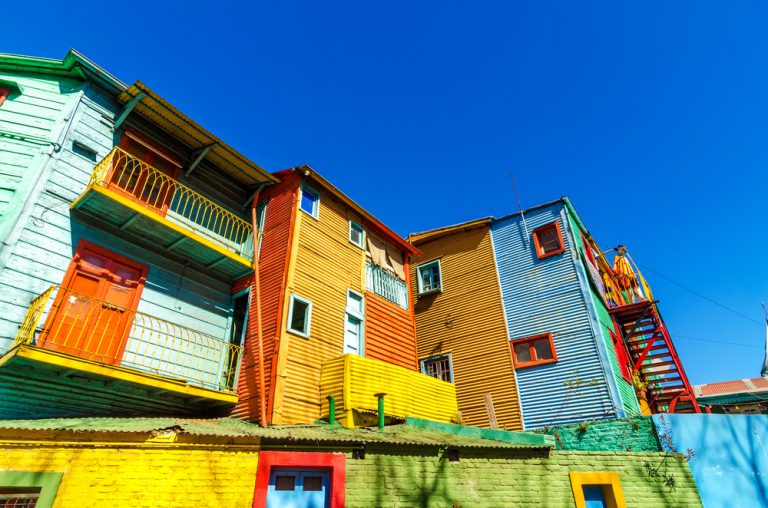
Unwind in the Japanese Garden
Hidden away in the Bosques de Palermo Park you will find a little oasis of calm and tranquility, that will instantly transport you away from the noise and fast pace of the surrounding city. The Japanese Gardens are fun for all the family; the Kois and Ducks are always hungry for bread crumbs, and the Japanese tea house has surprising delights that everyone will enjoy.
No matter what time of year you choose to visit, these gardens are always miraculously maintained, and each season brings new colours and plant species. With it’s stunning water features, unique flowers, romantic scenery and Japanese architecture, this is one place not to be missed on your next trip to Buenos Aires.

Sample traditional coffee and Medialuna
Most Argentineans love three things; wine, football and, of course, coffee. The traditional way to drink coffee in Argentina is with a delicious, crispy Medialuna (Argentinean croissant), and there’s one place in Buenos Aires that you simply have to try this blissful combination, Café Tortoni.
This café is the most traditional in the city, being founded in 1858. Over the years Café Tortoni had played host to the depths of bohemian society to the heights of the literary community, and has never lost one shred of its grandeur or charm.
Here you can truly absorb the rich history and culture of Buenos Aires while sipping on some of the freshest brewed coffee, and watching the daily jazz and tango performances.

Marvel at the Teatro Colón
Another one of the Top things to do in Buenos Aires is this stunning, seven story masterpiece is one of Buenos Aires’ most prominent land marks. It is the City’s main performing arts venue, and is the only establishment of it’s kind in the entire country!
One step into this gigantic building and you feel instantly surrounded by history and elegance, with it’s outstanding acoustics, European eclectic design, and world-class opera forum, this comes as no surprise. Backstage tours and guided walks are on offer daily, with English speaking guides offering their services on the hour, every hour. You really must see this magnificent display when visiting Buenos Aires to truly appreciate the country’s heritage and artistic background.
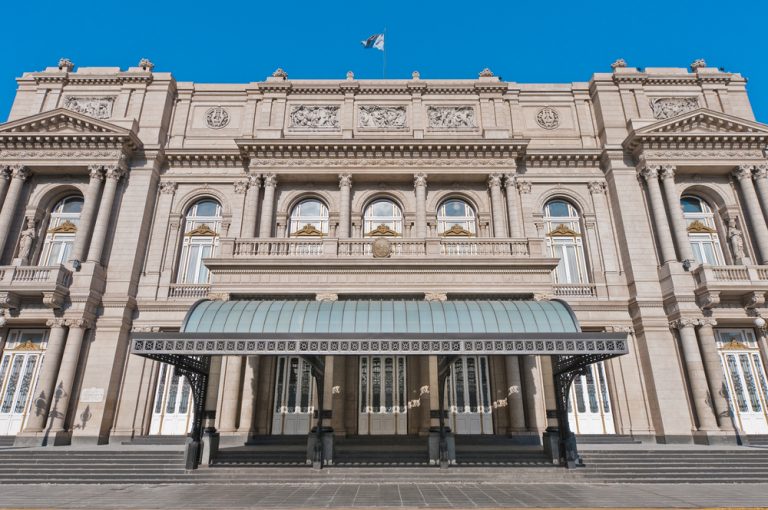
Dig into some Argentinean steak at Don Julio
Argentineans are known worldwide for their delicious and tender steaks, so there’s a whole lot of competition when it comes to the best parilla in town. However, there is one establishment that always seems to come out tops, with both locals and tourists alike, and that’s Don Julio’s.
This restaurant strikes the perfect balance between luxury and traditional, giving it’s diners an experience to remember. The state of the art kitchen opens up onto the dining room, and the expertly trained weight staff are always happy to give you a crash course in the meats available.
Probably the best thing about this restaurant, besides the steak, is their outstanding wine collection. You can find the perfect pairing for any cut or style of meat, and can show your appreciation by signing your bottle, which will then join the hundreds of others on the display wall.
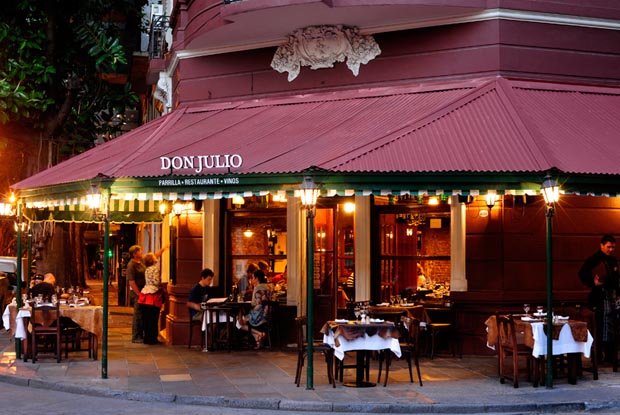
Dance the night away at Floreria Atlántico
People say that New York is the city that never sleeps, these people haven’t been to Buenos Aires. Some of the most amazing things happen in this city after the sun sets, and continue until it rises. One of the best, and most unusual places to enjoy the city’s night life is in the Floreria Atlántico bar and restaurant.
The most fascinating thing about this particular bar, is that its entrance is hidden in the back of a seemingly innocent flower shop. However, once you step inside you are greeted by a retro-inspired, ultra hip bar, that caters for diners and drinkers of all backgrounds and ages.
This bar was founded by two of the biggest names in the nightlife scene, Julian Diaz and Renato Giovannoni, the leader in Argentine mixology. The meeting of these two minds has created a bar like no other, with it’s modern soundtrack, laid back vibes, and state of the art cocktails, this is definitely the place to be on a night in Buenos Aires.
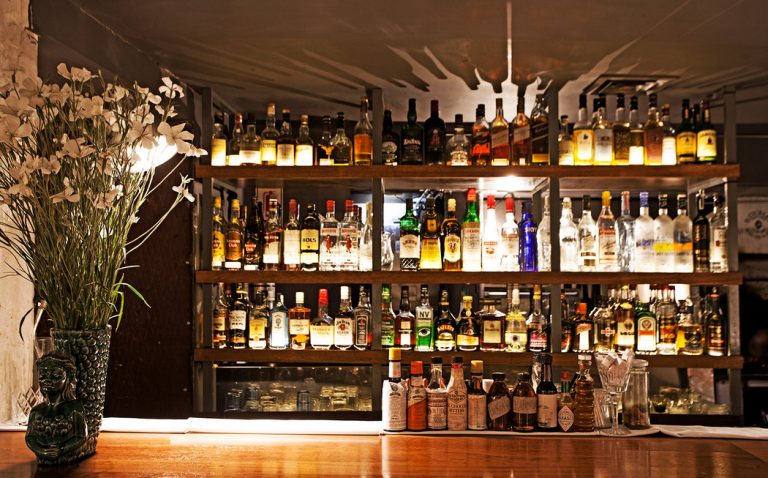
Best Time to Visit Buenos Aires
The best months for visiting beautiful Buenos Aires are during the southern spring, between September and November (when jacarandas bring the city to life) and in autumn, during March, April and May.
Having said that, your visit should be planned primarily around the activities in which you wish to partake in Argentina. If you’re here for the exceptional skiing on the southern slopes, then you’ll want to book your trip for July and August.
If the only time you can take off is during the Christmas-break, then you’ll find a surprisingly peaceful Buenos Aires. Locals enjoy their summer break at seaside locations like Mar del Plata, leaving the somewhat sweltering city with a quiet atmosphere.
The first two months of the year tend to be the busiest and most expensive, as international crowds descend on the Argentinian capital, on their way to a host of other destinations all over the continent. If you’re after the quietest months to visit, then you ought to consider July and August, in the heart of winter.
While temps may be low there’s usually still plenty of sunshine, and the lack of crowds and lower prices for just about everything can more than make up for the chill in the air.
Best Way to Visit Buenos Aires
Although many visitors reach Buenos Aires overland from neighbouring countries, the great majority will first set foot in Argentina through the city’s main transport hub, the Ezeiza International Airport. This is one of Latin America’s busiest airports and is serviced by all major international airlines connecting passengers to all major cities in Europe, North America and Australia.
The most convenient direct flights are from London, Madrid, Paris and Rome in Europe, New York, Chicago and Miami in the US, as well as Sydney, Melbourne and Brisbane in Australia via Auckland (great for New Zealanders) and via a stop-over in Santiago, Chile.
The Ideal Springboard for More South American Adventures
Throw a dart blindfolded at a map of South America and it’s highly likely there’ll be a direct flight there from Buenos Aires. From awe-inspiring Iguazu Falls to the wine-drenched region of Mendoza and the glacier-filled horizons of Patagonia,
Argentina’s most celebrated highlights shine like a beckoning beacon from the departure hall of Buenos Aires’ airport. And if you have more than just two weeks up your sleeve, then the world is your oyster.
From here, you can catch direct flights to all major South American capitals, including Santiago, Lima and Rio de Janeiro, with each option opening up an even wider world of travel possibilities.
As both a destination in its own right and a fantastic springboard for greater explorations of South America, Buenos Aires is one of the most coveted travel hubs in the world. We can help you plan an unforgettable adventure in the Argentinian capital as well as an extended, once-in-a-lifetime tour to experience the best highlights in the whole continent. So check out all our Buenos Aires tours options and contact us for further info.

Where Will You Go Next ?
- Popular Destinations
- Antarctica
- The Arctic
- South America
- Central America
- More to explore
- Amazon
- Antarctic Circle
- Antarctic Peninsula
- Argentina
- Bolivia
- Brazil
- Canadian Arctic
- Chile
- Colombia
- Costa Rica & Panama
- East Antarctica
- Ecuador
- Galapagos Islands
- Greenland
- Guatemala & Honduras
- Machu Picchu
- Mexico
- Patagonia
- Peru
- South Georgia and Falkland Islands
- Spitsbergen
- Sub Antarctic Islands

Talk to one of our experienced Destination Specialists to turn your Antarctic, Arctic and South American dream into a reality.
Contact us
